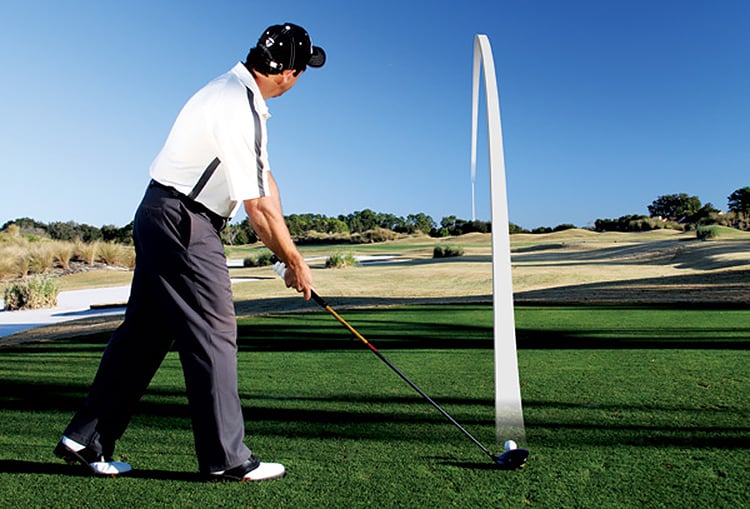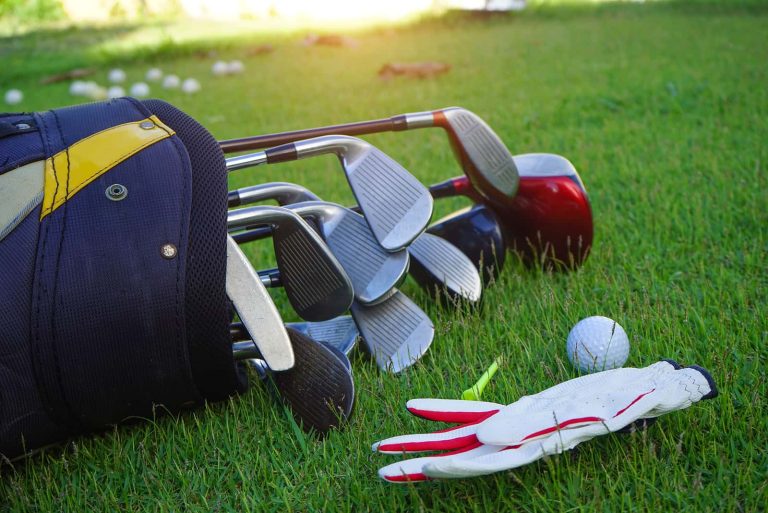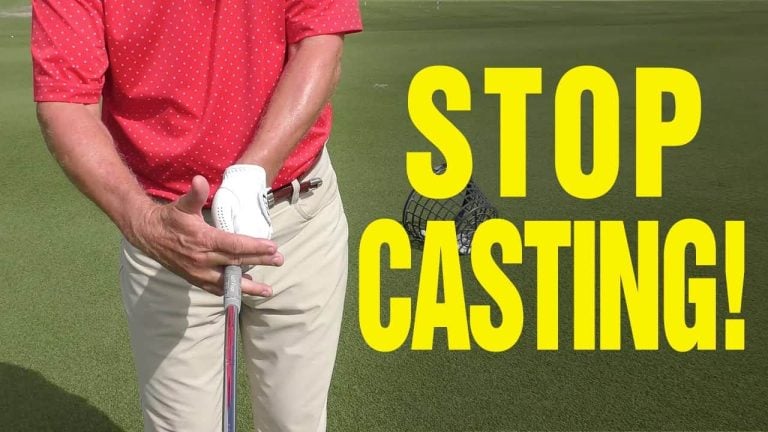how to Get Better at Golf: Unlocking Your True Swing
Key Takeaways:
- Proper posture and body alignment are crucial for improving your golf game. Focus on achieving the correct stance and body posture to enhance your performance on the course.
- To master the art of the swing, work on generating power and rotation. Incorporate tips and techniques that help you generate more power and rotate effectively during your swing.
- Enhance your short game skills by improving your pitching and putting techniques. Develop techniques and strategies that can help you become more accurate and consistent with your short game shots.
- Navigate the golf course effectively by utilizing golf GPS and rangefinders. These tools can help you accurately measure distances and make informed decisions about club selection.
- Identify and improve weaknesses in your game by tracking fairways hit, greens-in-regulation, and putts. Keeping a record of these statistics will help you identify areas for improvement.
- Always warm up before playing and take steps to prevent injuries. Incorporate recommended warm-up exercises for most golfers to prepare your body for a round of golf.
- Choose the right golf equipment that suits your game. Consider factors such as the golf ball, golf clubs, and other equipment that can enhance your performance on the course.
- Incorporate practice routines and habits into your golf training. Utilize deliberate practice techniques and set SMART goals to maximize your practice sessions.
- Maintain a positive mindset and mental approach in golf. Overcome frustrations and distractions, and stay focused on your game.
- Practice on the golf course to simulate real playing conditions. Work on specific shots and scenarios that you encounter during actual rounds.
- Take advantage of golf technology and resources to improve your game. Explore options such as golf simulators, training aids, and online resources that can provide valuable insights and assistance.
- Consider additional tips for improvement without lessons, such as focusing on fitness, nutrition, and managing expectations. These factors can contribute to overall improvement in your golf game.
- Embrace the journey to becoming a better golfer. Enjoy the process of learning and continuously strive to improve your skills and knowledge of the game.
Introduction
Improving your golf game without lessons starts with understanding the importance of proper posture and body alignment. Achieving the right stance and positioning can greatly impact your swing and overall performance.
In this article, we’ll explore why having the correct posture and body alignment is crucial for success on the golf course. Get ready to take your golf game to the next level by mastering this fundamental aspect of the game.
Importance of proper posture and body alignment in golf
To build a strong foundation in golf, proper posture and body alignment are key. The feet should be shoulder-width apart and parallel to the target. Weight should be evenly distributed and knees slightly bent. The spine should be straight, with a slight tilt from the hips. Align shoulders, hips, and feet parallel to the target. Alignment aids like sticks or markers can help.

Posture and body alignment are vital for consistent ball striking and accuracy. They help generate power and clubhead speed. They also prevent injury by distributing forces across the body.
Drills that focus on posture and alignment can improve your game. Work with an instructor or use training aids to ensure proper form and technique. Good habits in these areas benefit your game and contribute to a healthier golfing experience. Stand tall and strike fear into crooked backs!
Tips for achieving the correct stance and body posture
Achieving a good golf swing requires the right stance and posture. For accuracy, consistency, and power in your golf shots, proper alignment and posture are key. Here are three steps to get it right:
- Feet shoulder-width apart: Stand with feet parallel and shoulder-width apart. This gives a stable base for your swing and helps with weight transfer.
- Bend from the hips: Bend forward from the hips, keeping your back straight. No hunching over the ball! It helps keep balance and enables torso rotation during your swing.
- Flex your knees slightly: Flex your knees slightly for more stability. Balance your weight on both feet for control and power.
Practice these techniques to develop muscle memory and a consistent setup routine. Mastering the art of the swing is a dance of power, finesse, and avoiding embarrassment!
Mastering the art of the swing
Mastering the art of the swing is crucial for improving your golf game. In this section, we will provide valuable tips on generating power and rotation in your swing that will help you enhance your performance on the course. By implementing these techniques, you’ll be able to hit the ball further and with greater accuracy, ultimately improving your overall golfing skills.
Tips for generating power and rotation in your swing
Generating power and rotation in your golf swing is essential for achieving optimal distance and accuracy. To do this, utilize the right techniques and body mechanics. This can increase the force of your swing and amplify the rotation of your body to create more clubhead speed.
- 1. Get a strong base with your lower body. Plant your feet and engage your hips and legs to start the downswing.
- 2. Activate your upper body. Create separation between your shoulders and hips during the backswing for a more powerful rotational movement.
- 3. Maintain a smooth tempo and rhythm throughout your swing. Avoid any sudden or jerky movements that reduce power.
- 4. Engage the muscles in your abdomen, obliques, and lower back to create rotational power in your swing.
- 5. Practice wrist hinge and release for efficient energy transfer from the body to the clubhead.
To increase power generation further, focus on flexibility, strength training, and conditioning exercises for golf. These may include exercises to improve rotational mobility, core stability, and explosive power.
Every golfer’s swing is unique, so it may be useful to talk to a golf professional or coach who can give personalized advice based on individual strengths and weaknesses.
Generating power and rotation in golf swings has been around for a while. Professional golf players have been looking for ways to optimize their performance. Thanks to research in biomechanics, we now know more about how body movements affect power generation in golf swings.
Golfers have experimented with various techniques such as weight shift, shoulder turn, and hip rotation to get more distance and control in their shots. Now, with tools such as launch monitors and swing analyzers, golfers can get data-driven insights into their swing mechanics.
Continuing to explore different training methods and improving constantly, golfers can discover new ways of generating power and rotation in their swings, ultimately enhancing their performance on the course.
Enhancing your short game skills
Enhance your short game skills in golf by exploring the techniques for improving pitching and putting, paving the way for better performance on the green.
Techniques for improving pitching and putting
Pitching and putting are vital for a golfer’s game. To do this well, the right stance and body posture are of the essence. These techniques need to be mastered for success in the short game. Utilizing golf GPS and rangefinders, tracking fairways hit, greens-in-regulation, and putts can identify weaknesses.
- Focus on stance and posture
- Improve power and rotation with swing techniques
- Practice different pitching methods
- Enhance putting accuracy with alignment and stroke control
- Create strategies for the course based on distances and hazards
Before playing golf, warm up to prevent injuries and maintain flexibility. Selecting suitable golf equipment, with practice routines and SMART goals, can improve skill. Also, having the right mindset is important for dealing with frustrations.

Practicing on the course itself can help simulate actual conditions. Utilize golf technology such as simulators, training aids, and online resources. Fitness, nutrition, and managing expectations also contribute to improvement.
My pitching and putting have vastly improved due to the techniques mentioned above. Accuracy and consistency have risen, leading to better scores. The game has become even more enjoyable with these improvements.
Strategies for navigating the golf course effectively
Strategies for navigating the golf course effectively: Learn how to utilize golf GPS and rangefinders, and develop a solid tee box and approach shot strategy to improve your game. Increase your accuracy and reduce your strokes with these practical techniques. (Source: Reference Data)
Utilizing golf GPS and rangefinders
Golf GPS and rangefinders can help level up your game. They measure distances on the golf course, giving you the data you need for accurate shots. With GPS tech, you can pinpoint the yardage to hazards, greens, and more.
Rangefinders measure your target precisely, helping you pick the right club. If you want to learn how to get better at golf, check out this article on Wikihow for some great tips and tricks.
These devices offer more than just distance measurement. They can help with strategic decisions and boost your performance. They also give you info about your location and the layout of each hole. This helps you make the best strategy for tee box and approach shots. Using these tools gives you confidence in your decisions, based on accurate data.
Remember to check if your GPS and rangefinders are allowed in tournaments. They’re great for practice or casual play, but not all tournaments let you use them. Make sure your tech is legal before you rely on it during competitions.
Golf GPS and rangefinders can give you a competitive edge. Utilize them and access the info you need to make smart decisions. Improve your accuracy and boost your confidence on the course. Strategize the best way to hit your tee and approach shots – even the best plan won’t keep your ball from ending up in the water.
Developing a tee box and approach shot strategy
Mastering the art of club selection is key to honing a tee box and approach shot strategy. Wind, distance, and course layout should be considered. A pre-shot routine should be created to enhance accuracy and control.
Visualizing shots before executing them is also important. Practice drills to simulate shots from varying distances and angles can help golfers develop their strategy. Hazards should be avoided while still positioning for a good putt or chip onto the green. Tools like GPS and rangefinders can provide distance info and aid club selection.
By using the Reference Data and these strategies, golfers can improve their game. Practice and implementation will make for a more rewarding golfing experience. Facing golfing demons head-on is essential to identify and improve weaknesses.
Identifying and improving weaknesses in your game
Identifying and improving weaknesses in your game – a crucial step for honing your golfing skills. We’ll take a closer look at tracking fairways hit, greens-in-regulation, and putts to help you pinpoint areas for improvement on the green. Let’s dive into the data and discover actionable insights to elevate your golf performance.
Tracking fairways hit, greens-in-regulation, and putts
Tracking the number of fairways hit, greens-in-regulation, and putts is essential to improving your golf game. Track ’em with a scorecard or mobile app!
By referring to these stats, you can identify patterns and trends in your game.
| Fairways Hit | Greens-In-Regulation | Putts |
|---|---|---|
| 69% | 76% | 30 |
Analyzing the data gives you valuable feedback on areas that need improvement. Plus, you can make informed decisions about practice and future rounds.
For example, if you struggle with ball-striking, focus on driving accuracy. Or if you excel at putting, prioritize that skill!
By tracking fairways, greens-in-regulation, and putts, you can gain insights into strengths and weaknesses. Armed with this knowledge, you can make targeted improvements and lower your scores.
But don’t forget to warm up… unless you want sore muscles and a putter for a crutch!
Importance of warming up and preventing injuries
To avoid injuries and improve your performance in golf, warming up is key. In this section, we’ll explore the importance of warming up and preventing injuries in the context of golf. Discover the recommended warm-up exercises for golfers that will help you enhance your game and ensure you’re primed for a successful round on the course.
Remember, a proper warm-up not only reduces the risk of injuries but also optimizes your swing and overall golfing experience.
Recommended warm-up exercises for golfers
Warm-up exercises are key for golfers prior to hitting the links. They ready the body and mind for the game’s physical demands, lessening the risk of injury and improving performance. Rotational stretches, dynamic movements, gentle cardio, joint mobility exercises, and mental preparation techniques are all essential for warm-up routines. Additionally, golfers should customize their pre-game routine to address any personal weaknesses.
Investing time in warming up can lead to improved swing mechanics, reduced muscle tension, increased focus, and enhanced performance on the course. Remember: you can’t blame your clubs when your swing looks like a drunken penguin, so choose your gear wisely!
Tips for selecting the right golf equipment
When it comes to improving your golf game, selecting the right equipment is key. In this section, we will provide you with valuable tips for choosing the most suitable golf ball, clubs, and other necessary equipment.
Whether you’re a beginner or a seasoned player looking to enhance your performance, making informed decisions about your golf gear can significantly impact your game. So let’s dive into the essential factors to consider when selecting your golf equipment.
Choosing the suitable golf ball, clubs, and equipment
Selecting the correct golf ball is key to up your game. Think about your swing speed and style to pick a ball that offers the right spin, distance, and control. Choose clubs that fit your ability and preferences. Take into account factors like shaft flex, clubhead design, and loft angles for the best clubs.
Fit your equipment properly to optimize your swing mechanics. This includes adjusting club length, grip size, and lie angle. Invest in quality gear that follows industry standards, looking at material composition and technology.
Be informed about the latest trends in golf equipment to stay ahead. New tech can really improve your performance, so stay up-to-date! Additionally, assess and upgrade your equipment as you progress in skill level or changes in your physical abilities.
By selecting the correct golf ball, clubs, and equipment, you can enhance your performance on the course and better your game. Remember, practice makes perfect in golf – and often involves getting frustrated in new and creative ways!
Incorporating practice routines and habits
To improve your golf game, it’s crucial to establish effective practice routines and habits. In this section, we’ll dive into the art of deliberate practice techniques and the importance of setting SMART goals.
By incorporating these strategies into your training regimen, you’ll be well on your way to achieving success on the golf course. So, let’s explore the practical steps you can take to elevate your golfing skills and reach new levels of performance.
Deliberate practice techniques and setting SMART goals
Focus on Specifics: Deliberate practice means concentrating on specific parts of your golf game that need improvement. This could be enhancing your swing, perfecting your short game, or improving your course management strategies.
Repetition and Variation: To learn new skills and habits, it is vital to repeat drills and exercises regularly. But, also introducing variation prevents stagnation and makes you more adaptable in different conditions.
Feedback and Assessments: Ask experienced golfers for feedback or use video analysis to identify weaknesses and create targeted practice strategies.
SMART Goals: Set Specific, Measurable, Achievable, Relevant, and Time-bound (SMART) goals to guide your practice sessions. These could be improving accuracy off the tee or reducing the number of putts per round.
Structured Plan: Make a structured plan to allocate time to different parts of your golf game. This makes sure you cover all areas and spend enough time on the ones that need extra attention.
These deliberate practice techniques and SMART goals help you perform better on the golf course. Also, mindfulness practices can help with focus and mental resilience during gameplay. Visualization and meditation exercises help manage distractions and maintain a calm mindset.
Don’t let the greens mess up your head, keep your mental game strong to succeed.
Mindset and Mental Approach in Golf
Developing the right mindset and mental approach is crucial for excelling in golf. In this section, we will explore strategies for overcoming frustrations and maintaining an unwavering focus on the green. Discover how a strong mental game can significantly enhance your performance and help you reach new heights in your golf game.
Overcoming frustrations and maintaining focus
Boost your golf game with focus! Set specific goals and cultivate a clear mindset. This will create a roadmap for improvement and keep you motivated. Try mindfulness techniques to stay present and prevent distractions. Visualization is also key.
Imagine yourself hitting successful shots to increase confidence. Research shows that focusing can lead to better performances. A study published in the Journal of Applied Sport Psychology found that golfers who stayed focused achieved lower scores. So, practice on the course and don’t give up on your dream of a hole-in-one!
Beyond the range: Practicing on the golf course
When it comes to improving your golf game, practice beyond the driving range is crucial. In this section, we explore the benefits of practicing on the golf course, simulating real playing conditions, and dedicating time to working on specific shots.
By taking your practice sessions beyond the range, you will develop a better understanding of the game and enhance your skills in a more realistic and targeted manner.
Taking advantage of golf technology and resources
With the right golf technology and resources, you can take your game to new heights. Discover the world of golf simulators, training aids, and online resources in this section. These tools offer valuable support and guidance to enhance your skills on the green. Embrace technology and utilize the resources available to improve your golf game like never before.
Conclusion: Embracing the Journey to becoming a better golfer
Start your way to becoming a better golfer! Follow these tips. Focus on technique and form, as found in the article “How to Get Better at Golf.” This data can help you improve.
Stay positive. Achieving your golf goals needs dedication and perseverance. Reference data shows that keeping a determined attitude is key to success. With this mindset, you can overcome difficulties and move forward.
Consistent practice is also important. According to the reference data, regular training and conditioning are essential. Set aside time to perfect your swing, refine your technique, and build your physical abilities. This will help you to get better at golf.
Talk to experienced players for advice. Reference data also emphasizes the value of expert guidance. Ask for feedback and make adjustments as needed. This can fast-track your progress.
To sum up: staying positive, practicing consistently, and learning from experts are essential for becoming a better golfer. Put these principles into action and reach your full potential! Start your journey to improvement today.
Some Facts About How To Get Better at Golf:
- ✅ Practicing your short game, including putting, chipping, and pitching, is crucial for improving your golf skills. (Source: wikiHow)
- ✅ Using training aids strategically can be helpful, but it’s important not to become too dependent on them. (Source: theleftrough.com)
- ✅ Developing a routine for putting can help reduce nerves and improve performance on the green. (Source: Team Research)
- ✅ Tracking your golf stats, such as fairways hit, greens-in-regulation, and number of putts, can help identify weaknesses and areas for improvement. (Source: Team Research)
- ✅ Practicing at home with a residential golf simulator allows for convenient and frequent practice regardless of weather or course availability. (Source: foresightsports.com)
FAQs about How To Get Better At Golf
How can I improve my golf game without taking lessons?
There are various ways to improve your golf game without taking golf lessons. Some tips include practicing with purpose, using training aids strategically, focusing on your short game, tracking your progress, and incorporating technology into your practice.
What are some tips for improving my short game in golf?
To improve your short game in golf, you can focus on practicing putting, chipping, and pitching. Spend at least fifteen minutes each day practicing your putting, starting with two-foot putts and gradually moving to three-foot putts. When chipping, use soft hands and keep the club shaft in line with your left arm. When pitching, rely on your arms instead of your wrists for better control.
Should I use a specific type of golf ball to improve my game?
Choosing the right golf ball for your game is important. It is recommended to use the same ball consistently to better understand its characteristics. Experiment with different golf balls to find one that matches your clubhead speed and provides the desired trajectory and distance.
How can I improve my swing speed in golf?
To increase your swing speed in golf, you can focus on stretching your arms wide on the backswing to create a “rubber-band effect” for more forceful contraction of muscles and increased club speed. Additionally, using a lighter driver can help golfers with swing speeds under 90 mph to achieve faster swing speeds and improved control.
What are some strategies for improving consistency and accuracy in golf?
To improve consistency and accuracy in golf, it is recommended to practice with a bad ball to develop mental toughness and handle adversity. Additionally, practicing with a purpose by setting specific goals and picking targets can help improve your focus and overall performance. Randomizing your club selection at the driving range and replicating on-course demands can also be beneficial.
Is physical conditioning important for improving my golf game?
Yes, physical conditioning plays a vital role in improving your golf game. Stretching your hamstrings daily can help counteract the negative effects of a seated lifestyle and anterior-muscle dominance, preventing injuries and improving your golf swing. Incorporating full body strength training into your routine can also help enhance your golf game by increasing strength, flexibility, and awareness of club positions.







